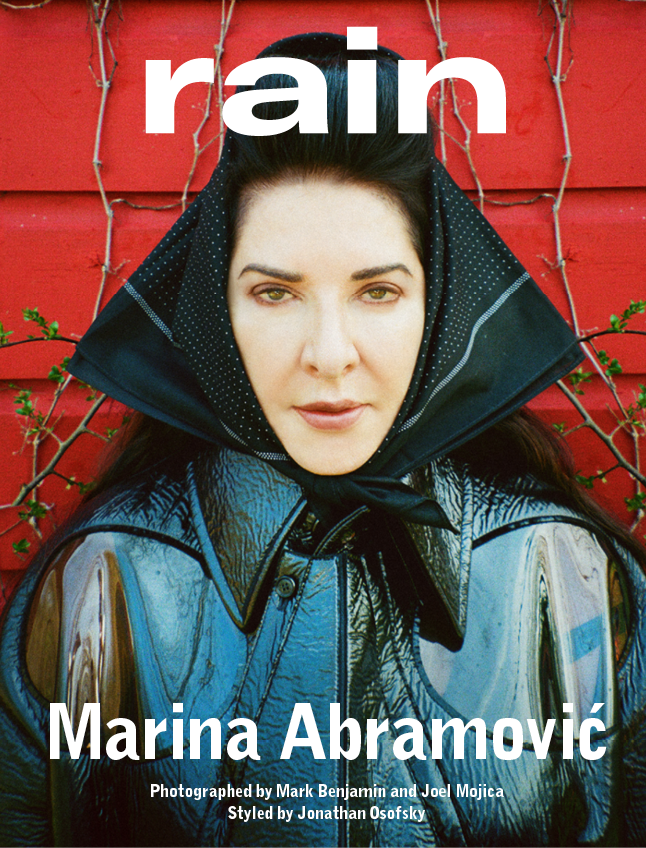
Performance artistMarina Abramovicis known for her works of endurance on the mind, body, and spirit. She once said of her performance pieces, “it’s so easy to put the human spirit down but so difficult to lift the human spirit up. If I can do it, my audience can, too.”
A testament to her thesis, Abramovic haswalked two thousand miles of the Great Wall of Chinaandsat for an audience at the MoMAfor 750 hours (31 days) straight. Recently, she created an opera, “7 Deaths,” and a film with actor Willem Dafoe, “7 Deaths of Maria Callas.” In the jaw dropping and surreal film, she reperforms six death scenes and the actual tragic death of one of opera’s greatest singers of all time, Maria Callas.
Marina's take on fashion
Now, Marina Abramovic reinvents her relationship to fashion. In her earliest pieces, fashion was an important part of her work. She would often dress in utilitarian clothing, a style that was commonplace in communist Yugoslavia. Abramovic has since become a symbol within the lexicon of fashion having graced sixty-two magazine covers, including this one. She has appeared on the cover ofDust,Pop(with an effigy of herself),MUSE(as an astronaut), and Harper’sBAZAARmultiple times.
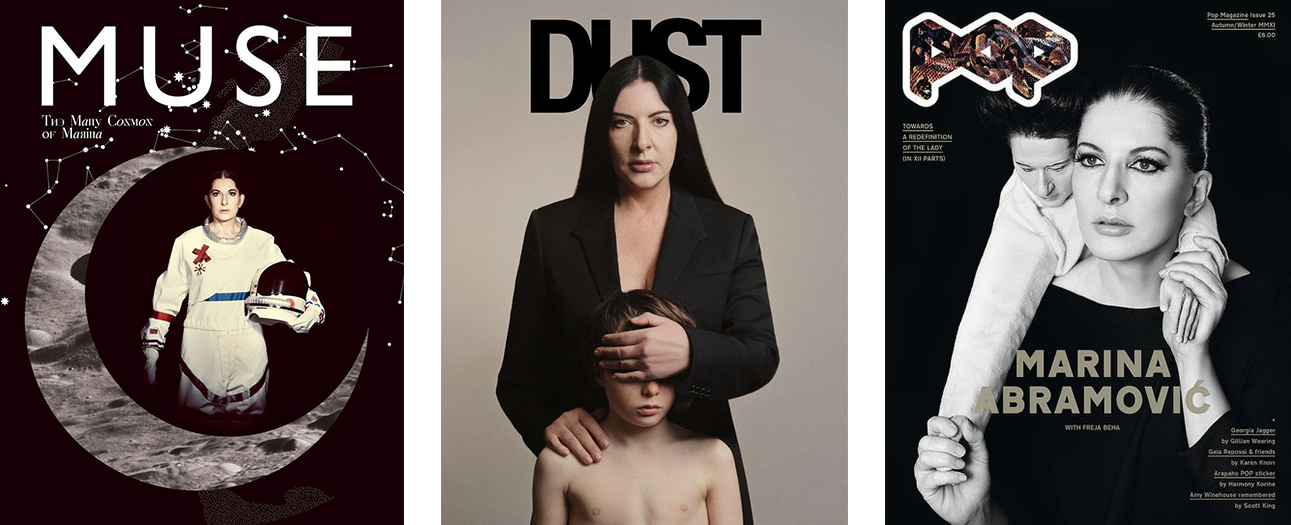
In 2011, Marina Abramovic and close friend, Burberry designer,Ricardo Tisci, collaborated on “The Contract,” a story told through a photograph which blurs the lines between fashion and art. In it, the artist and designer pose as Madonna and child, bringing forth questions about the spiritual relationship between fashion and art.
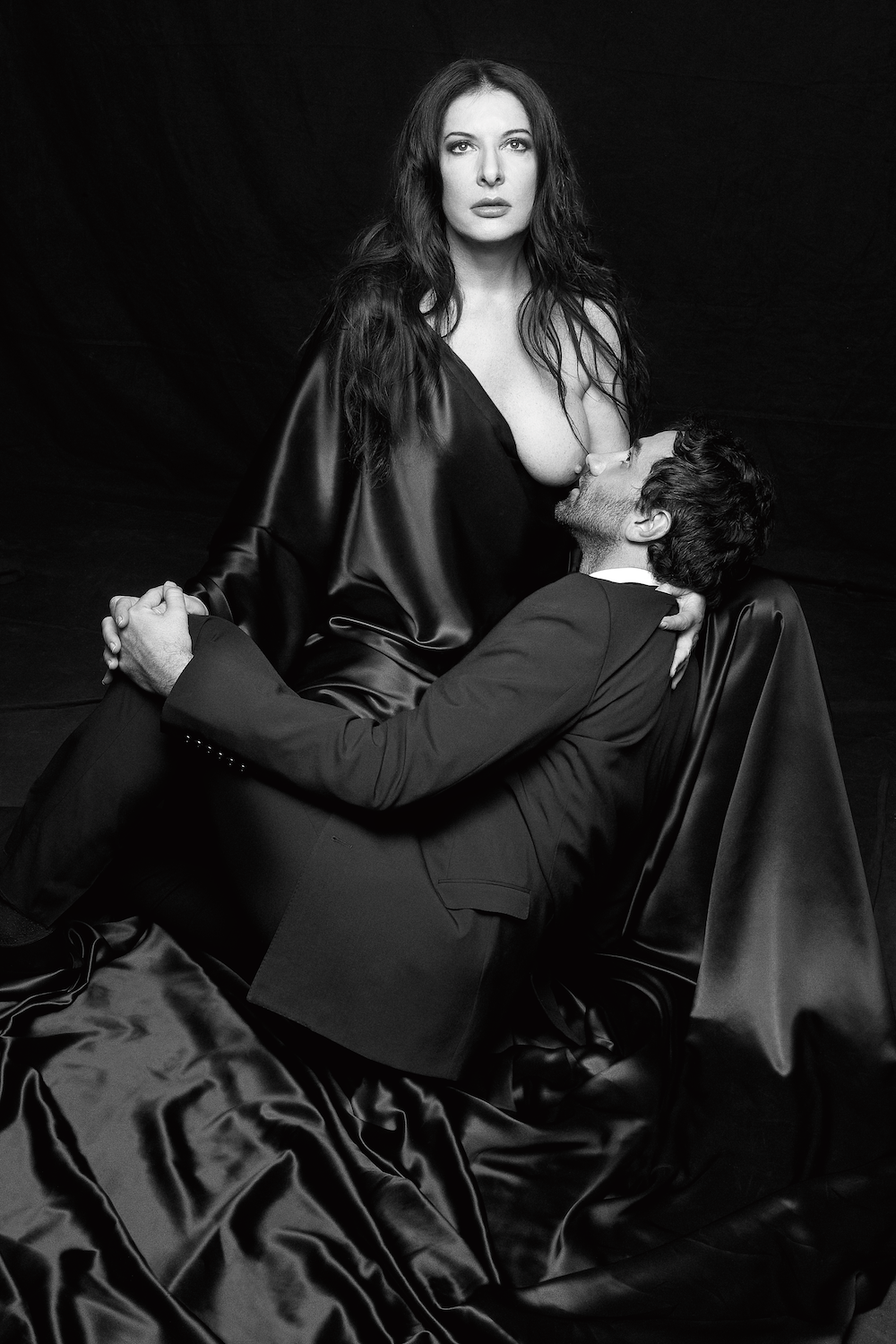
“There's no category for fashion, art, and music, for me,” she explains. “There are only two categories: the originals and the ones who follow. Every century there are two or three of these geniuses, not more. They can be in science, fashion, cinema, literature, philosophy, whatever. And then, you have the rest of us following. But good art never dies. It has multiple lives.”
If an artist had anything to do with fashion, they were absolutely considered bad artists. Fashion and art could not live together.
Unusual beginnings
The story of Marina Abramovic is one of remarkable and unusual beginnings. Born in war torn Yugoslavia, both her parents held leadership roles in the war, and were considered heroes. They met under peculiar circumstances, in that her father, Vojin, was a communist leader, who had found her mother, Danica, an art historian bleeding to death. He saved her once it was discovered that they shared the same blood type. Later, her father, also bleeding to death, was saved by her mother. Although they realized they didn’t have much in common, they conceived Marina. Thus, an artist was born.
[Error processing image]
Abramovic’s calling is one of immeasurable responsibility: to lift the human spirit through art. For Marina Abramovic, art should be three things: it should predict the future, it should be disturbing, and it should ask questions. Specifically, for Abramovic, it should involve an audience as a propelling force. Her work shows the audience what is possible to achieve because of their participation. She is, in a sense, a conduit for collective consciousness. The exchange between audience and artist is the ultimate gesture of her work, and for Marina, this is the focus which assists in unlocking higher forms of consciousness.
Art must be true
“Art must be beautiful. Artist must be beautiful,” she chanted inher 1975 workof the same name. It is a resistance to notions of art as upholding a certain quality of exceptional beauty or aesthetic. The beauty of art is not important for Abramovic. For her, art must be true.
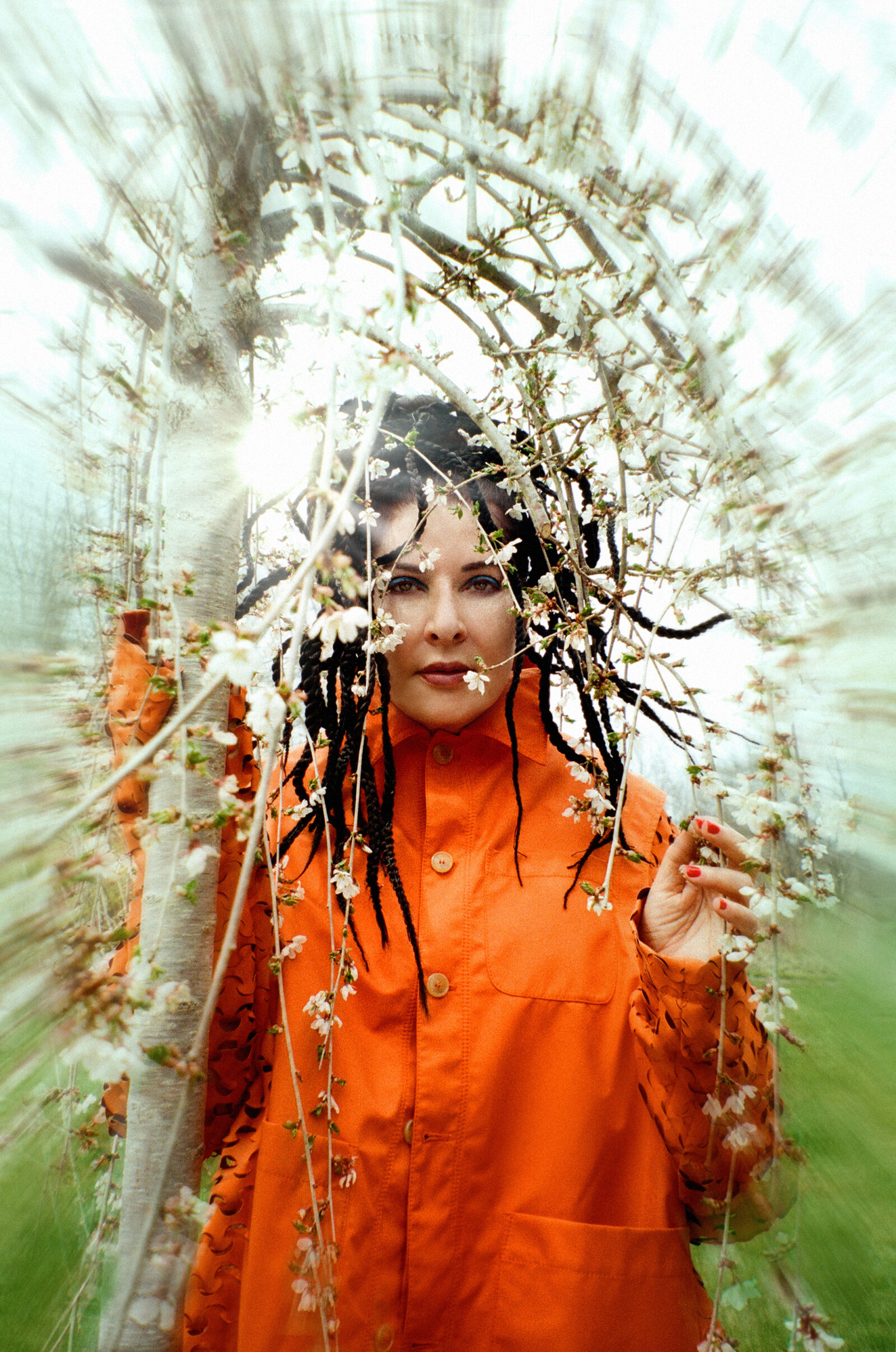
At the time, this radical notion placed her at the forefront of the first wave of feminist critique. She went on to become a political voice and leader for generations of women finding themselves in a quickly shifting nation. Today, many of the same values feminism promoted pervade culture. Inclusivity, respect, and the celebration of ourselves has become woven into the fabric of modern societies.
Fuck what the people think! I want to be free. Freedom is intoxicating and it’s great.
Though fashion and identity have a long and troubled history, image conscious publications and brands have recently taken note of the changing tide.Aaron Rose Philip(the first black, transgender, and physically disabled model),Precious Lee(the first black curve model to appear in AmericanVogue), andEllie Goldstein(the first model with down syndrome) have proven that modeling involves more than the body; it involves the soul. Representation, whether in art or modeling, is about the celebration of our differences and the human spirit.
Healing
Through her art, Marina Abramovic helps others recognize their own pain by providing an entry way to healing. Less than a year ago, her work, “Crystal Wall of Crying,” was erected in the Babyn Yar ravine of Kiev, Ukraine, to commemorate the Babyn Yar massacre. It was one of the biggest massacres of the Holocaust during World War Two when Nazi troops gunned down nearly 34,000 Jewish men, women and children at the wooded ravine of Babyn Yar on Sept. 29-30, 1941.
For her, this pain experienced from the war is all too real. Not only because her story began during a war, but also because she hasactively foughtto heal those affected by its traumas through her work. The war in Ukraine has also been a devastating and painful reminder to those who know war all too well. Designer Demna Gvasalia of Balenciaga recently dedicated his Fall/Winter 2022 runway show to the war in Ukraine. “The war in Ukraine has triggered the pain of a past trauma I have carried in me since 1993, when the same thing happened in my home country and I became a forever refugee,” he recounted in an open letter.
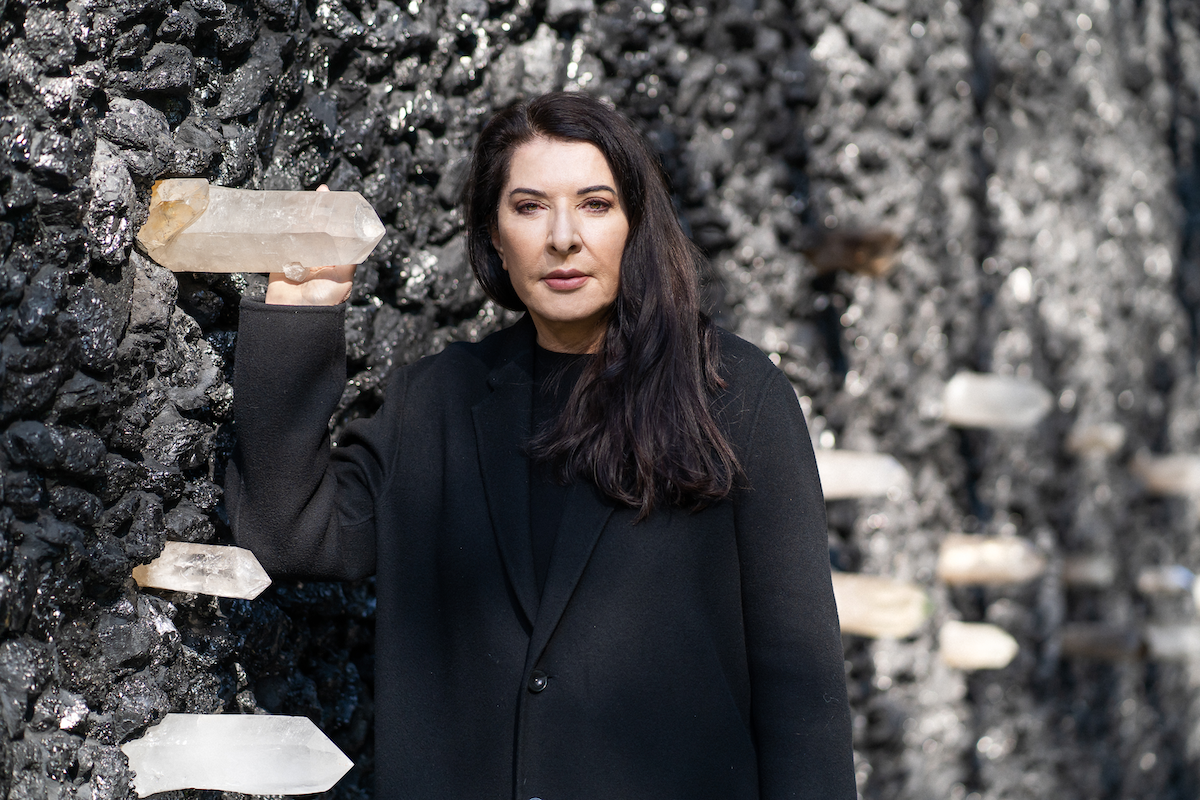
The work and memorial, a large wall of dark stones with protruding quartz crystals, was destroyed only months ago by Russian bombs at the start of the war in Ukraine. Five people were killed and five more injured. The wall itself was meant to help people by giving them an entry point for reflection and healing. Now with the work destroyed, the forces of war that it had sought to address have reappeared.
From fear to love
“A miracle is a shift in perception from fear to love,” Marianne Williamson once said. For many that have participated in her works, it is more than art because the healing is real. Abramovic does not seek worship nor admiration but rather asks for an open mind. A chance to listen to a message about overcoming our own fears and transforming them into love.
Transforming fear into love has been a difficult journey even for one of art’s greatest minds. Marina recounted how as a young child she never felt pretty, “My hair was always cut short with a pin, I had to wear a blouse and orthopedic shoes. I had a big nose on my small child face. I felt so ugly and so unwanted and so terrible. For my birthday, I got flannel pajamas that were always three sizes too big. My mom told me they would shrink when they washed. They never did.”
[Error processing image]
It wasn’t until she stood in front of an audience to perform for the first time that Marina felt “energy, electricity” through her body. “I was no longer this poor little shitty Marina. I was a superhero and didn’t care if I felt fat or skinny. After all, I was presenting an idea to communicate my art,” she recalled.
However, between her private life and public performance there was a schism. Existing in the public sphere in Yugoslavia was a challenge for Abramovic because of the public’s strictly imposed limits on self-expression. “Luxury didn’t exist in communism. Luxury was something vain. If a woman had red lips or red nail polish, they would be shunned as a whore, a prostitute,” she explained.
It wasn’t only society but also the art world that had impositions on fashion. Marina explained, “In the early 70s, performance art was expected to be done with the naked body or in dirty black and white attire. If an artist had anything to do with fashion, they were absolutely considered bad artists. Fashion and art could not live together.”
Yohji Yamamoto
In 1988, Marina and her cherished collaborator Ulay had planned to meet and marry in the middle of the Great Wall of China as part of a performance piece. After canceling their engagement the two decided to complete the project, each walking two-thousand miles from opposite ends. Afterwards, devastated and heartbroken, Marina went to Paris where she put on a show at the Centre Pompidou. The show was a success and allowed her to purchase her first designer clothes from the collection of an emerging designer named Yohji Yamamoto.
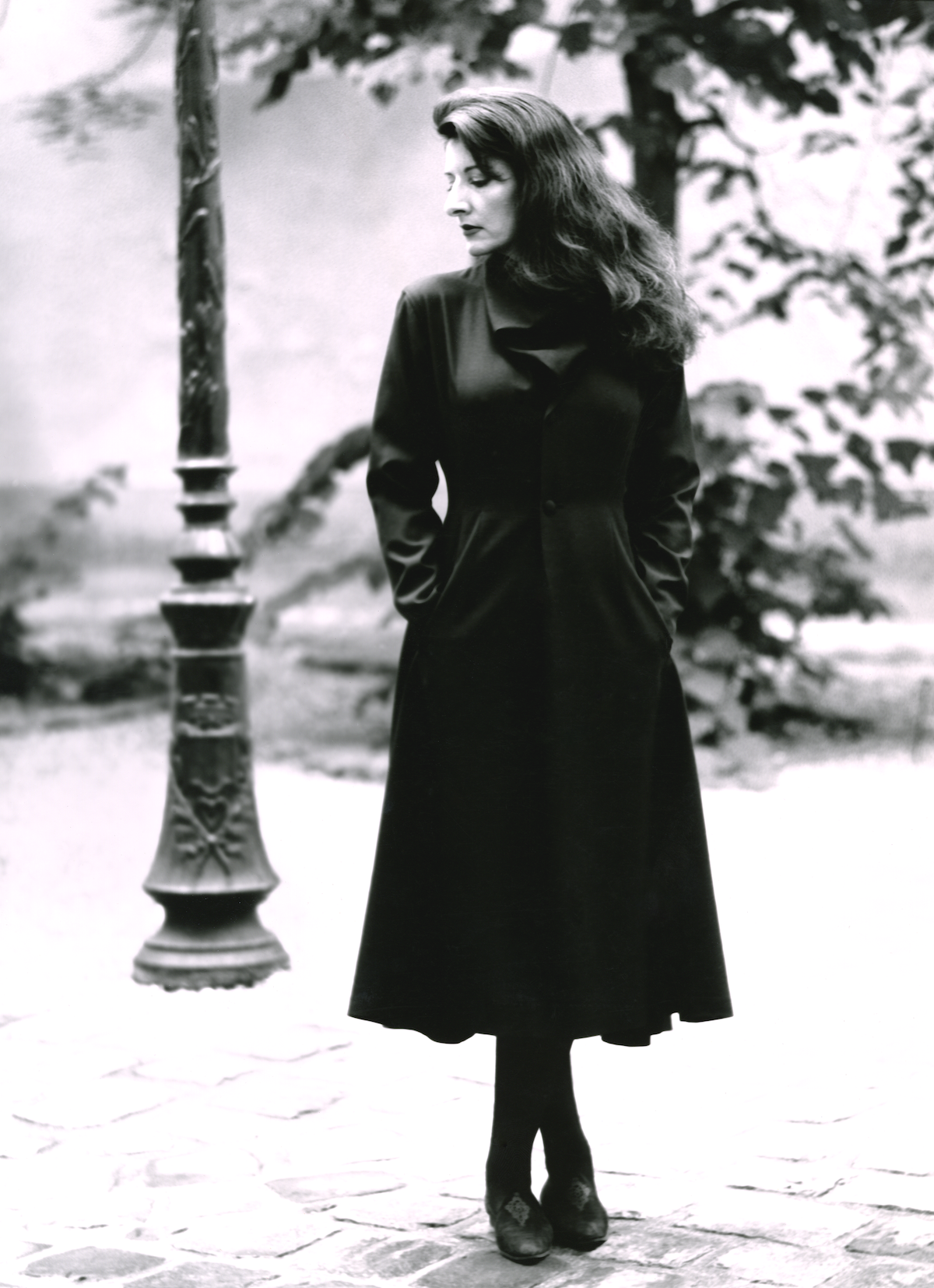
“I still have the clothes. I bought trousers, I bought an asymmetrical jacket, and a white shirt with a one-of-a-kind triangle sticking out. Everything is symmetrical. I went out and felt this incredible pleasure. Paris was smiling at me and everything was wonderful,” she recalled.
Ricardo Tisci
Years later, Marina met designer Ricardo Tisci, the creative director of Givenchy at the time, who inspired her to embrace herself with clothing. They were introduced by Marina’s then husband, Paolo Canevari. Ricardo told her how, as a student, he had come across her art while attending Central Saint Martins. The two quickly hit it off. She now jokes that she became his ninth sister (he has eight).
“Ricardo dramatically changed my belief in myself. That I could wear things. That I could look good and feel good. It helped establish my self-confidence. I was always secure as an artist, but not as a woman. There was a division between the two worlds.”
[Error processing image]
As an artist, it has always been important for Marina to expose things that people would never expose. Yet for years, she struggled with ridding herself of self-doubt. “When you are ashamed of something and you show it and share it with the world, you become vulnerable. That vulnerability in the public brings you real feelings, because we all have those same feelings, but we hide it. It's your body. You can do whatever you want and project different things.”
Sharing everything
The influence of social media and the ubiquitous image of perfection can be hard to shake. “When you look at the big jetsetters and stars, they’re always presenting the best parts of it. Then you find out their vulnerabilities, or their trash. I don’t want to have any insecurities and I don’t want to have any secrets. I make it my work to share everything,” she explains.
For Marina, it goes beyond the mirror and into how we live our lives full of fear. “For many, I think jealousy comes from envy. There’s also the fear that you're scared to change your life. People are unhappy with their current lives, but you can create your own life as you like. Nobody else can create it for you. Say you have been with the wrong person for years. You don't even talk to him in your marriage. Whatever problems you have, you can really look at them and change. I did.”
[Error processing image]
This sense of freedom in her daily life is the ultimate sense of luxury. “I want to be a mirror for people to show them freedom, to show my change. I went through so much shit in my life and now I'm really happy. My boyfriend is twenty-one years younger than me who is kind of crazy about me. He calls me ten times a day and sends me flowers, all from Japan. I love him very much.”
The vulnerability that comes with freedom means going all the way, even into the bedroom. “People stop fucking when they’re fifty,” she says. “This whole idea about life stopping after menopause is not true because actually you won’t care about getting pregnant. You have so much more fun plus you know your body better. All of this is taboo to talk about with women. When I see women get upset by this you can see they don’t have a sex life. It’s sad. It’s terrible. What keeps you alive is to be alive!”
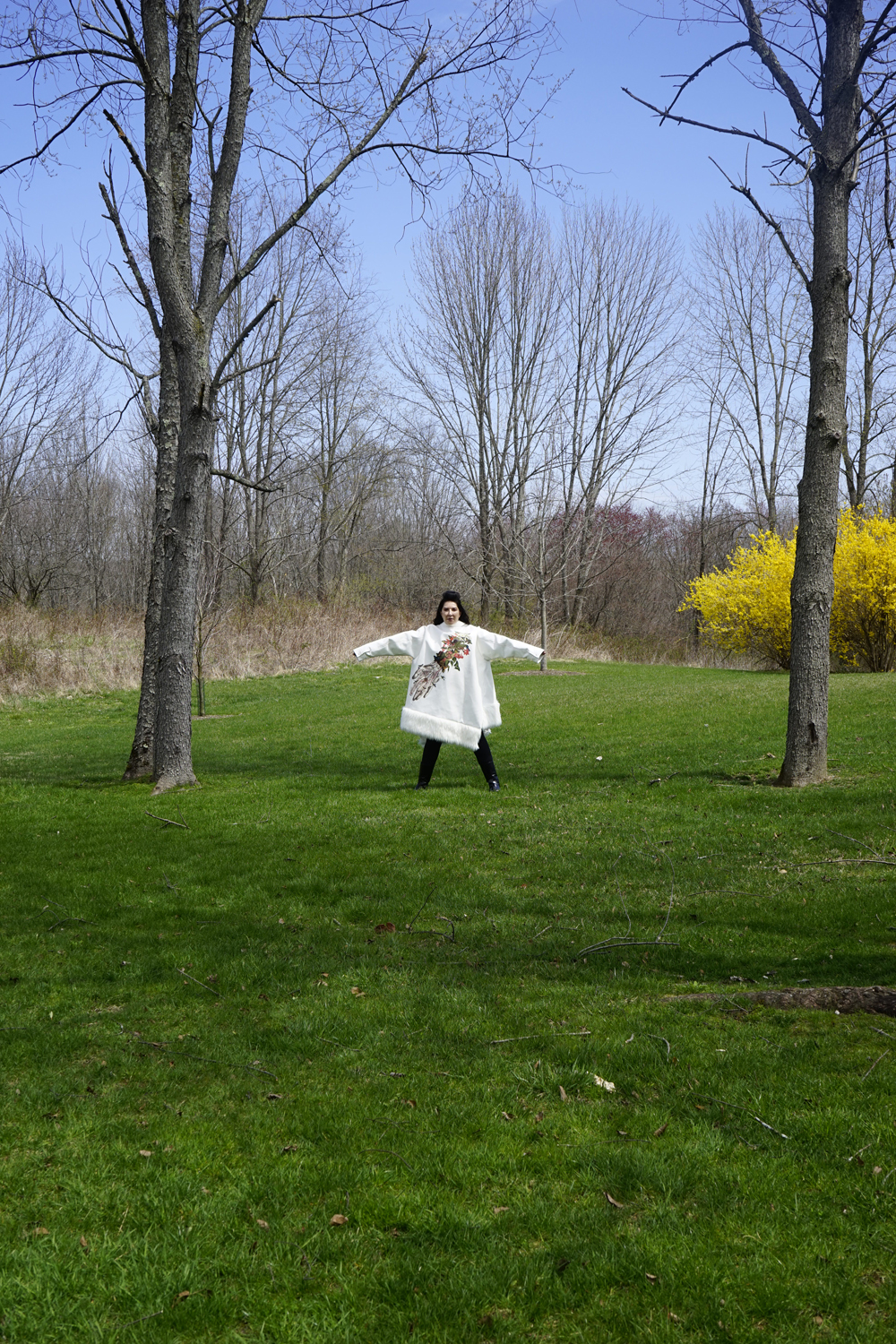
Fuck negativity
For years, societal norms deprived Marina of joy and shamed her. She has been accused of being a satanist, the subject of countless death threats, conspiracies, and has been assaulted with her own portrait. Today, she sits across from me wearing black sandals; one says “fuck” and the other one says “negativity.”
“I have no shame in having joy now. I used to think, ‘Oh my God, what will people think if I wear this?’ Fuck what the people think! I want to be free. Freedom is intoxicating and it’s great.” She also finds inspiration in the values of younger generations that are more fearless with their style. “My generation [Baby Boomers] is judgmental. They would never dream to wear things that may look ridiculous. But why not look ridiculous? What’s wrong with that? Fashion gives you the possibility to dream. To go to an unknown world, to be somewhere else, to explore and discover sides of yourself that you didn’t even know exist.”
Instagram:@abramovicinstitutemai.art
Text byMark BenjaminandLouis Augustine HerreraMarina AbramovicPhotography byMark BenjaminandJoel MojicaStyling byJonathan Osofsky/KASURIHair byTakuya Yamaguchiwith The Wall Group using Oribe Makeup byPaco Blancaswith L’atelier NYC using NARS cosmetics Art direction byMichaela NilssonPost creative direction byChris CorreaSpecial thanks toSiying Qu,Donna Clairfield,Billy Zhao, andMatthew Moorman
